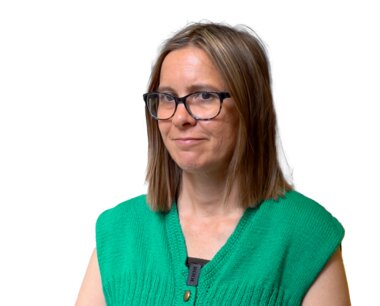Letter of Hope for Long COVID patients
A patient adviser with the South East London Long COVID programme has written a Letter of Hope to help people with their recovery from the illness.
Stephanie Schreiber caught COVID-19 in March 2020, and it took nearly a year before her condition stabilised and she started to see improvements. She had difficulty returning to everyday activity and suffered multiple symptoms, including fatigue, chest pain, and increased heart rate.
 The mum-of-two [pictured] is in the patient advisory group that helped develop 10 animations for the programme. Covering a range of topics, the animations offer guidance on managing symptoms and reducing the risk of ongoing issues. To watch them, go to the YouTube playlist here.
The mum-of-two [pictured] is in the patient advisory group that helped develop 10 animations for the programme. Covering a range of topics, the animations offer guidance on managing symptoms and reducing the risk of ongoing issues. To watch them, go to the YouTube playlist here.
A new course on the KHP Learning Hub has been developed around the animations for any healthcare workers who want to learn more about the complex recovery process. Explore the course here.
The full Letter of Hope, by Stephanie, is below:
Dear Reader,
Long COVID recovery can seem daunting, and overwhelming at times. I hope my story can offer you some inspiration as you piece together the elements that will build your own recovery.
Rebuilding my health has been tough, and slower than I would have liked. But now, as I continue to heal, I am at peace with the process, because along with the challenges, I’ve also found meaning and new opportunities.
Now, nearly four years on, I am working towards an active lifestyle once again. So here goes…
After experiencing a mild COVID-19 infection in March 2020, my health deteriorated, and I ended up with a range of debilitating symptoms. At first, I tried to push forward with my life despite my symptoms, until a crash in my energy forced me stop.
My first learning was accepting my condition, it broke my heart to stop being an active mother and I was devastated to have to put my career on hold. It took quite a lot of trial and error for me to stabilise. By the end of 2020, I still felt anxious and quite down at times, but I hadn’t given up hope.
I continued to seek treatment, but my next key learning was to adapt my mindset to put myself in the driver’s seat of my recovery. I concentrated on what I could influence. I learned how to take baby steps forward. I learned how to pace myself, how to reintroduce activity, and most importantly how to practice good self-care, such as setting boundaries with family and friends about what I could and couldn’t do. Listening to my body and intuition rather than reverting to old habits paid off. As I re-connected with my body, I came to understand what made me feel better or worse. I was able to slowly introduce habits that helped me feel well. I set small, achievable goals, letting go of a time-frame recovery. Each success built my confidence.
The biggest breakthrough I’ve had (but also the hardest) has been embracing a feeling of safety in my body, even though I still experience some symptoms. I know that small setbacks are a normal part of recovery, and that as I get stronger, I can try more things. With this confidence to experiment, I’m setting bigger goals.
Every day, I choose to focus on acceptance and recovery. Sometimes I’ve got stuck or gone backwards. I certainly don’t always make healthy choices and that’s ok. We’re only human after all. Progress is what matters, and I focus on that, whether I have a tough day or a great day.
Sending you warm wishes for today and hope in your recovery ahead! Stephanie
____________
The KHP Learning Hub is an education resource that is free to use for anyone working or studying in the KHP partnership. A guide on how to use the Hub can be found here.
The South East London Long COVID Programme is a two-year programme funded by NHS Charities Together and Guy’s & St Thomas’ Charity. It is one of the first KHP services to include all five NHS Trusts in south east London and their hospital charities. Its overall aim is to accelerate the recovery of people with Long COVID across the six boroughs of south east London.